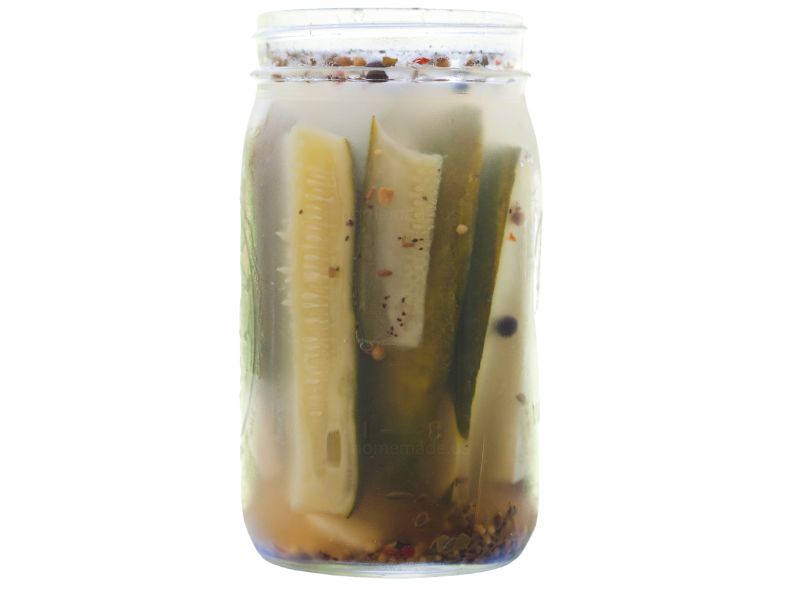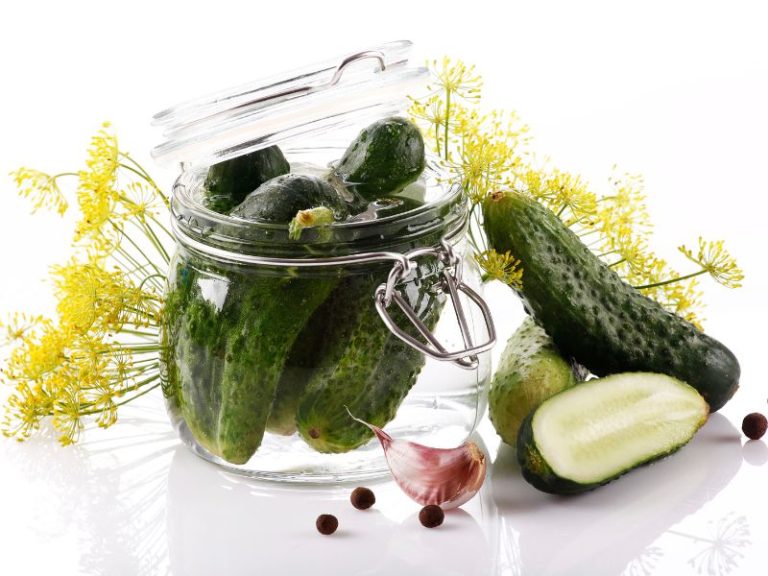You had me at lacto-fermented pickles. A classic, tangy treat that tickles the taste buds and brings back memories of yesteryear. Sit back, my friends, as I whisk you away on a culinary journey through time, where pickling was not only a means of preserving our cherished cucumbers, but also a delightful, probiotic-rich addition to our meals. Lacto-fermentation is an ancient method of preserving food that relies on lactic acid bacteria, which not only preserves the food but also enriches it with gut-friendly probiotics. Pickles have been around for over 4,000 years! In fact, Cleopatra credited her beauty to a diet rich in pickles.
Now, let’s dive into the nitty-gritty of transforming ordinary cucumbers into these crunchy, zesty delights:
Ingredients:
- 4-5 medium-sized pickling cucumbers
- 1 quart of filtered water
- 2 tablespoons of sea salt (unrefined, please!)
- 2-3 fresh garlic cloves, peeled and smashed
- 1 tablespoon of dill seeds (or fresh dill, if you’re feeling adventurous)
- 1/2 teaspoon of black peppercorns
- 1/2 teaspoon of coriander seeds
- Optional: a pinch of red pepper flakes for a spicy kick
- 1-2 grape or oak leaves (trust me on this one)
Instructions:
- First things first, give your cucumbers a good scrub to remove any dirt or debris. Trim off the blossom ends, as they contain enzymes that can lead to mushy pickles (and nobody wants that!).
- Combine the filtered water and sea salt in a bowl, stirring until the salt dissolves. This brine will be the magical potion that transforms cucumbers into pickles.
- In a clean, wide-mouth quart jar, layer the garlic, dill seeds, peppercorns, coriander seeds, and red pepper flakes (if using). Pack the cucumbers vertically into the jar, nice and snug, like sardines in a can.
- Here’s where those grape or oak leaves come in handy: Tuck one or two at the top of the jar to help keep the cucumbers submerged in the brine. Pour the saltwater brine over everything, ensuring the cucumbers are completely covered.
- Seal the jar with a lid, but don’t crank it too tight. We want to allow any gas produced during fermentation to escape. Set the jar on a plate or shallow bowl to catch any overflow and store it at room temperature, away from direct sunlight.
- Time for patience, my dear pickle-lovers! Check the jar daily, giving it a little burp (open the lid slightly to release any gas), and skim off any foam or sediment that may form. Your pickles should be ready in 7-10 days, depending on your taste preference.

Servings: This recipe yields one quart of lacto-fermented pickles, or approximately 20-25 pickle spears, perfect for sharing or hoarding (no judgment here).
Once your pickles have reached their desired level of tanginess, transfer the jar to the refrigerator to slow down the fermentation process. The flavor will continue to develop over time, so feel free to let them age like a fine wine! These lacto-fermented pickles offer a burst of complex, tangy, and slightly spicy flavors, perfect for jazzing up a sandwich or simply snacking on straight from the jar. Remember, good things come to those who wait, and these pickles are no exception!
As for storage and aging, your lacto-fermented pickles can be kept in the refrigerator for up to 6 months, though they’ll likely be devoured long before then. Keep in mind that the flavors will continue to evolve over time, becoming more pronounced and complex as the pickles age.
In summary, these homemade lacto-fermented pickles are not only a delightful way to preserve and enjoy cucumbers, but they also offer numerous health benefits, thanks to the probiotics they contain. With a balance of intricate flavors and a satisfying crunch, they’re sure to become a staple in your kitchen. So gather your ingredients, roll up your sleeves, and prepare to embark on a pickling adventure that will leave your taste buds craving more. Happy fermenting!
© 2016-2023 by Homemade.us. All rights reserved. No part of this document may be reproduced or transmitted in any form or by any means, electronic, mechanical, photocopying, recording, or otherwise, without prior written permission of Homemade.us.

Leave a Reply